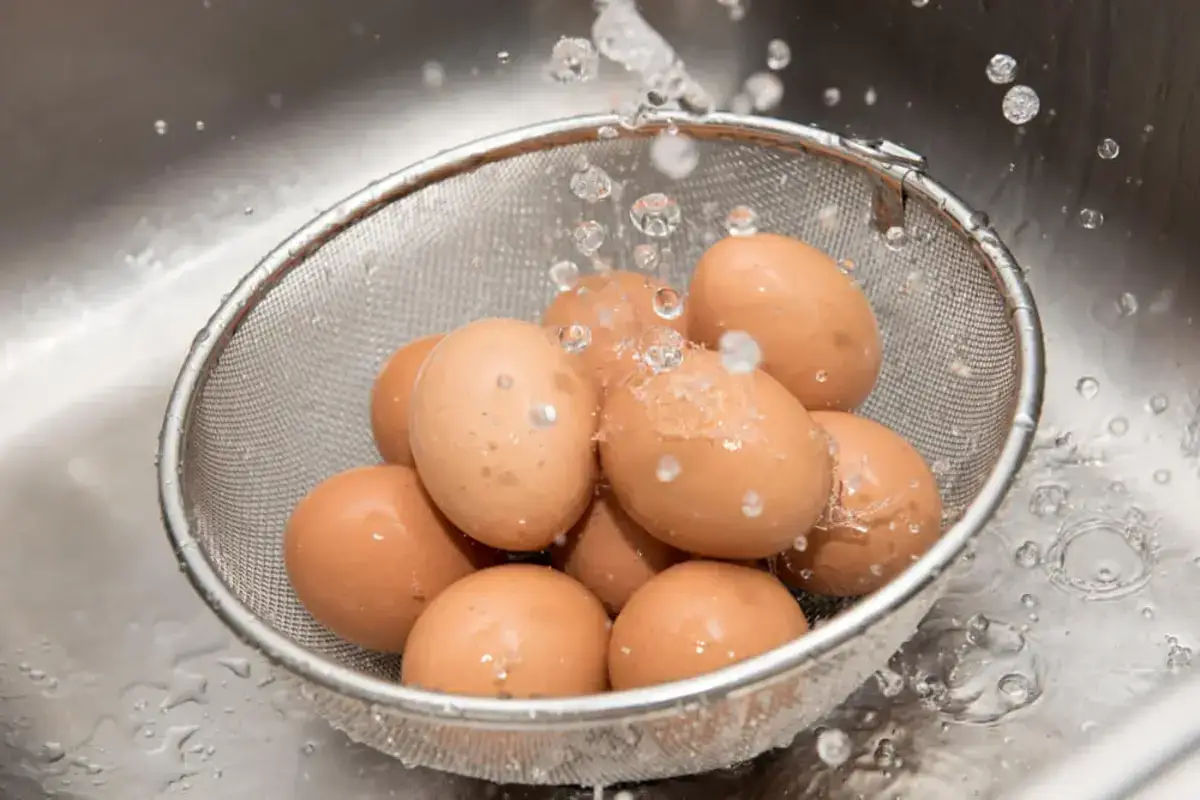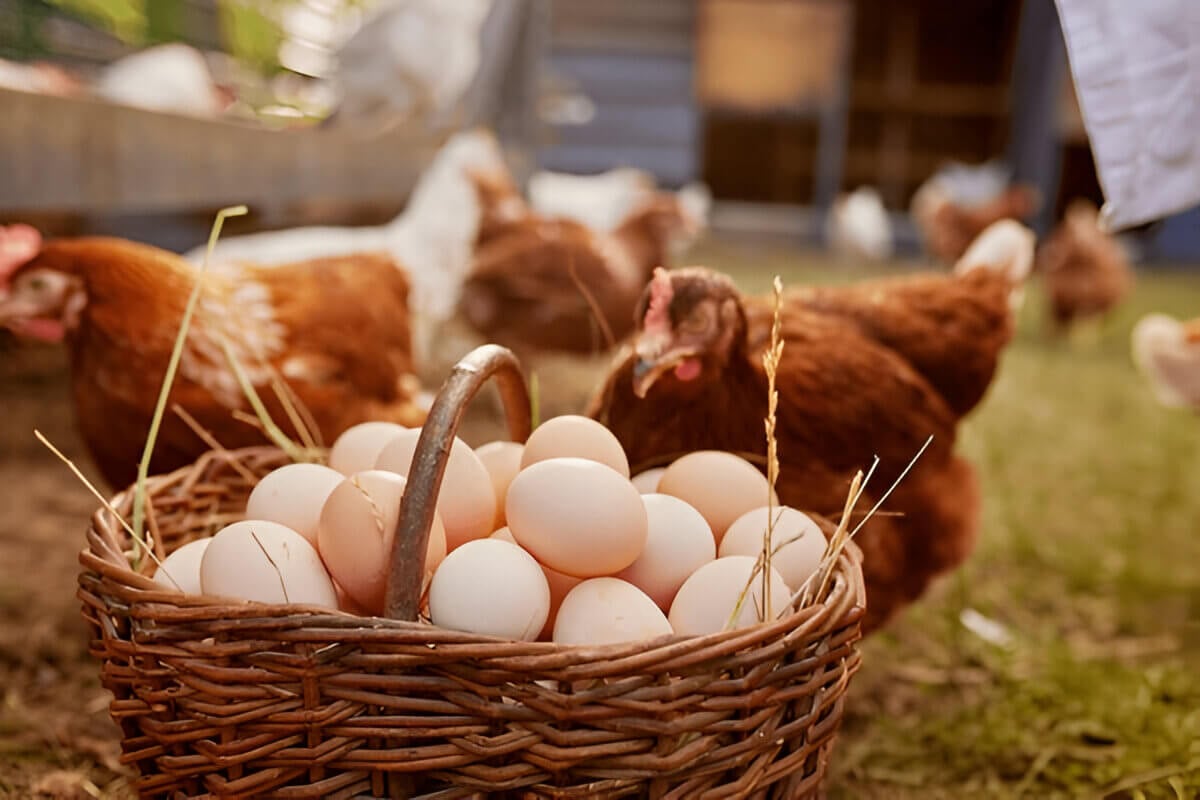Chicken enthusiasts, especially those new to the business of keeping chickens for egg production often come to us with questions such as “When do chickens start laying eggs”, and “Why aren’t my chickens laying eggs?”.
Been there, done that. With a long history of chicken rearing behind us, we know what it feels like when as a newbie you’re on the edge of your seat waiting for that first egg to pop out, but its not happening.. Your hens are of the appropriate age range, they’re well-fed and happy, they have a clean coop and run to roost and range to their delight—but no eggs still.
Today we unravel the appropriate time your chickens should start laying eggs, possible causes why they’re underperforming, and the first signs that will tell you your chickens are ready to lay eggs.
Let’s dive right in.
Do Chickens Lay Eggs at 3 Months Old?
You shouldn't expect your backyard chicken to start laying eggs under 3 months old. But when do chickens start laying eggs then, you might ask?
This hugely depends on the breed, but you can expect most breeds to start laying between 18-22 weeks old. This translates to roughly 4 or 5 months old, but some breeds won’t start producing eggs until they reach 6 or 8 months of age.
Once they start laying, your hens will lay an egg a day on average, slightly less than that. To be more precise, one hen on average will give you 250 eggs a year, as long as you're holding high-producing breeds and you’re mindful of caring for them well.
What Exactly Is the Lifespan of a Laying Hen?
The lifespan of a laying hen is about seven to nine years. As mentioned previously, they start laying when they reach maturity at around 4-6 months of age continuing with egg laying for 3-4 years.
However, most chicken keepers keep their hens for 2-3 years, as this is when they start aging and when the egg production dips lower. The aging process affects egg size and shell quality as well.
Pro tip: Note that your egg production will drop each year when the days get shorter and when your hens start to molt (replace their feathers starting early fall).
Alongside knowing the usual life cycle of your backyard chickens, it’s useful to know the ways you can keep track of your chicks for certain signs that they’re ready to commence producing. We’ll zero in on that next.
How Do I Know My Chickens Are Ready to Lay Eggs?
(Image source: Pexels)
You can’t know for a fact when your chicken is ready to lay eggs as breeds can be different. Yet, physical maturation and behavioral changes can speak volumes and they’re pretty much all you need to help predict when a chicken will lay its first egg.
Below are some ideas as to how to follow the early signs as you continue to keep the chickens on your radar.
Check for Physical Signs
1 - Inspect Your Hens’ Combs, Wattles, and Vents
One thing will change when your hens reach reproductive maturity—it’s the sight of their combs and wattles (the prominent parts on the top and bottom of their heads). The color of these body parts will become redder and they’ll also grow bigger.
Likewise, checking the appearance of your chickens’ vent (the opening from which the hen releases eggs, alongside urine and feces) can tell you whether the laying days are approaching. In an immature hen, the vent will be small and dull-colored, whereas as a hen matures it will grow larger and redder.
2 - Check for Your Chickens’ Skeletal Growth
Inspecting your chicken’s skeletal growth will enable you to tell whether your hens are approaching anywhere near their laying age. In particular, you should check for the distance between your hen’s pelvic and keel bones.
First, you’ll want to find the base of your hen’s breastbone, also known as keel or sternum which is the basic anatomic support for chicken’s major flight muscles. Then you should check for pin bones (lat. ischium) in the chicken’s pelvic bone area (these can be felt under the feathers, on either side of the vent).
(Image source: Poultryhub.org)
When your chickens are ready to start laying eggs, the gap between the base of the breastbone and the pin bones will increase. In addition, as your hens are maturing, their abdominal area will grow softer, as they will also likely experience fat buildup at this point.
3. Check If Your Hen’s Pin Bones Have Separated
Another safe non-invasive method to check whether your hens are in lay is to see if their pin bones have separated. As mentioned, you can find the pin bones on each side of the vent, just slightly above it.
If your bird is ready to lay eggs, the space between its pin bones will be the size of the egg it’s about to lay.
This hugely depends on the breed, so for Bantams, the gap between the pin bones will be approximately 1-1.5 fingers wide, while for the Commercial hybrid hens, it will be between 2-3 fingers in width.
Take Note of Behavioral Changes
1 - Start Frequenting the Nesting Box Area
You can tell your chickens are ready to lay eggs when they start showing special interest in their nesting boxes. When you see a hen testing the nesting box and rearranging the bedding around your nesting area you can tell it’s gearing up to start egg laying.
Yet, don’t mistake this for the actual thing—a hen may start showing nesting box interest behavior days, even weeks before she lays the actual egg.
Fact: There are things you can do to help prepare the nesting area to show encouragement to your laying hens. Here are a few hints to help you get started:
- Make your nesting boxes large enough. Use the 12 × 12 × 12 inches boxes for your nesting boxes. The general rule of thumb is to provide at least one nesting box for every 2-3 hens.
- Provide ample cushioning for freshly laid eggs. Fill your nesting boxes with plenty of dry straw or clean wood shavings (your hens will appreciate the pampering). Aspen fiber nesting pads are a great choice for this.
- Make your nesting area safe. Safety is second to none when it comes to egg-laying preparation. Before they start laying, hens will search for the safest place. That’s why it’s a good idea to make your nesting area super dry and warm. You can do this by equipping your coop with a waterproof roof and nesting box panels. Look at how the crew over at the Chicken Coop Company did this.
2 - The Hen Will Start Squatting
Squatting is an unambiguous sign that your hen is about to lay eggs. This is a biological precursor that indicates a female chicken is ready to be mounted by a rooster so her eggs can be fertilized.
A hen reproductively mature in this way will squat or crouch, in the absence of a rooster, when approached by other chickens higher up in the flock's pecking order and also when approached by humans. This means you’re weeks ahead of your hen’s first egg.
3. The Hen Will Perch On Its Nest
The obvious sign your chicken is about to lay an egg is when it starts perching on top of the nest. You may also witness your hens straining and making cackling and crowing sounds when they reach this point. This is when you can finally look forward to finding that egg in the nest within roughly a day.
If your hen has been brooding on the nest for 2-3 days without producing an egg, touch base with your veterinarian. This may be a sign your bird is “egg bound” and she needs medical attention.
What Can Affect a Hen’s Egg Production?
There’s a host of factors that affect your hen’s egg production, starting from her calcium levels, and her feeding habits and stretching onto the factors such as aging and the molting process.
Also, keep in mind your laying hens will lay fewer eggs during winter when daylight is shorter.
A healthy hen whose needs have been catered for will normally lay an egg every 24-27 hours.
That said, to maximize your egg production, it’s good to factor in why your hens aren’t giving their best (if they aren’t). The table below will help you identify possible problems and give you hints as to what you can do to troubleshoot your egg-laying issues.
Next Steps
So, there you go—a quick review of the typical life cycle of backyard chickens and when you can expect to have first eggs.
When your chickens start laying, though, don’t expect much (in terms of egg size and shape).
The good news, though, is that the eggs will get bigger and better as your hens mature and grow.
Once you create favorable conditions, your chickens will be able to continue happily pecking, ranging, brooding, and laying.
Want to stay updated on how to keep your chickens happy and healthy? Visit our big chicken blog and our chicken advice page for more actionable tips on chicken health and happiness.
And don’t forget to check our other articles on the hot topic of chicken rearing:





